Twenty-nine years ago, on April 26, 1986, the world witnessed the worst human made and humanitarian disaster effects of which are still being felt today. An explosion and fire at Reactor No. 4 of the Chernobyl nuclear power plant released large quantities of radioactive particles into the atmosphere which spread over western parts of the USSR and Europe. The Chernobyl disaster was the worst nuclear power plant accident in history in terms of costs and casualties. It is one of only two classified as a level 7 event (the maximum classification) on the International Nuclear Event Scale, the other being the Fukushima disaster in 2011.
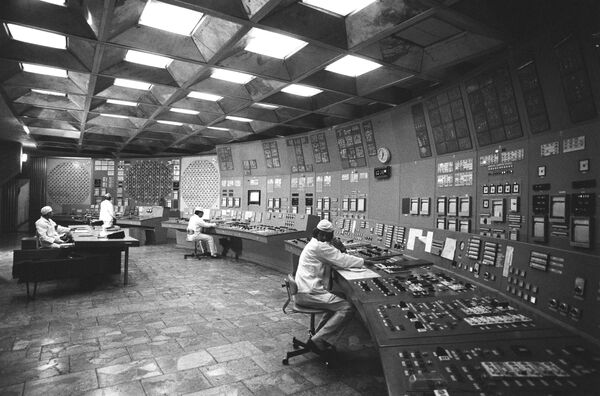
The Chernobyl Nuclear Power Plant (now decommissioned) is located near the city of Pripyat in Ukraine, 15.5 kilometers northwest of the city of Chernobyl and 16 kilometers from the Ukraine-Belarus border. The station consisted of four RBMK-1000 type reactors. The construction of the Chernobyl station and the nearby city of Pripyat began in 1970. Reactor No. 1 was commissioned in 1977. The station was the third nuclear power plant in the Soviet Union and the first nuclear power station in Ukraine.
Above: The control room of the Chernobyl Nuclear Power Plant (NPP) at Pripyat.
Above: The control room of the Chernobyl Nuclear Power Plant (NPP) at Pripyat.
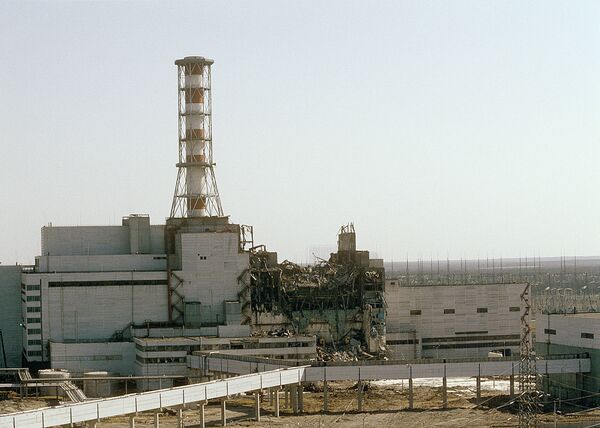
On April 25, 1986, personnel of the Chernobyl station was preparing to shut down the fourth power unit for repair works. On April 26, at 01:24 (UTC+3) the reactor suffered an unexpected catastrophic power increase, leading to explosions in its core. This disperses large quantities of radioactive fuel and core materials into the atmosphere. The accident occurred during an experiment scheduled to test a potential safety emergency core cooling feature.
Above: The Chernobyl Nuclear Power Plant as seen from the fourth power unit.
Above: The Chernobyl Nuclear Power Plant as seen from the fourth power unit.
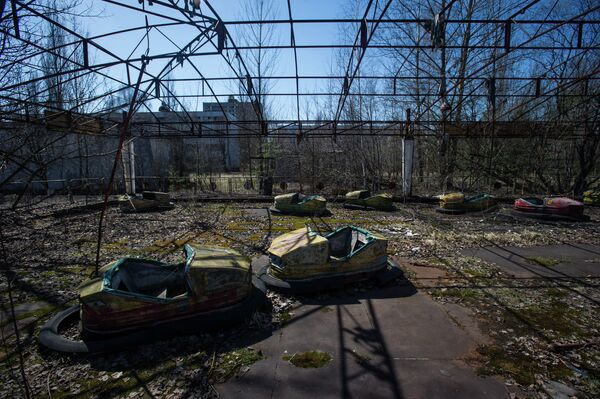
Despite the catastrophic scale of the disaster, the possibility of radioactive contamination near the power station and fallout in Western European countries, during the first days after the catastrophe the Soviet government did not take appropriate measures to inform people in the USSR and other nations. Moreover, steps were taken to classify data on the actual and potential consequences of the disaster.
Above: An amusement park evacuated after the accident at the Chernobyl nuclear power plant in the town of Pripyat, Chernobyl Exclusion Zone.
Above: An amusement park evacuated after the accident at the Chernobyl nuclear power plant in the town of Pripyat, Chernobyl Exclusion Zone.

The disaster at the Chernobyl nuclear power station was more like a radiological weapon with nuclear fallout being its principal effect. The accident released 100 times more radiation than the atom bombs dropped on the Japanese cities of Nagasaki and Hiroshima. Nuclear rains from the disaster fell as far away as Ireland.
Above: Construction of a new containment dome at the site of the Chernobyl nuclear power plant.
Above: Construction of a new containment dome at the site of the Chernobyl nuclear power plant.
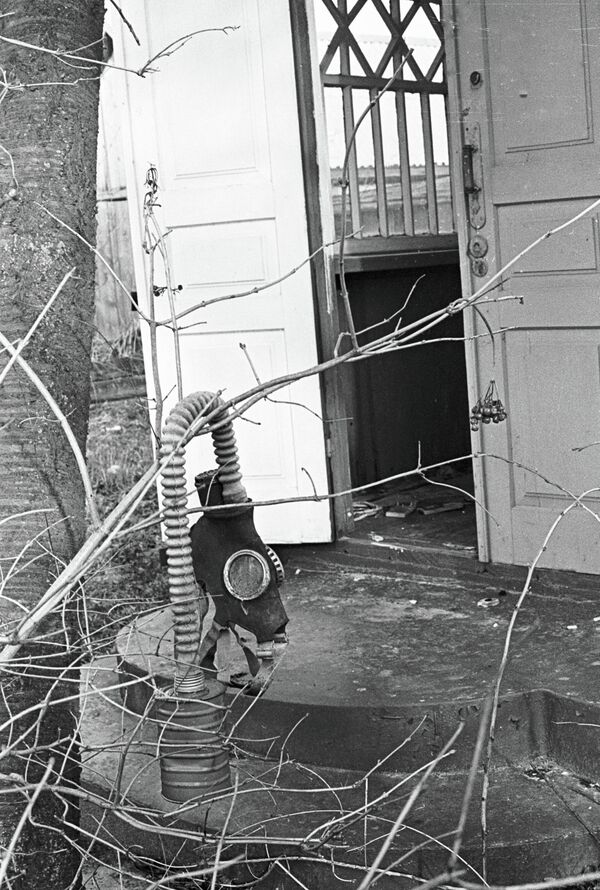
All surrounding areas within a radius of 30 kilometers were contaminated with radioactive materials. The total area of nuclear contamination in Ukraine was 50,000 square kilometers across 12 regions. Radioactive contamination affected 19 Russian regions with a total areal of nearly 60,000 square kilometers.
Above: A deserted house after the accident at the Chernobyl Nuclear Power Plant. A gas-mask is hanging on a tree branch.
Above: A deserted house after the accident at the Chernobyl Nuclear Power Plant. A gas-mask is hanging on a tree branch.
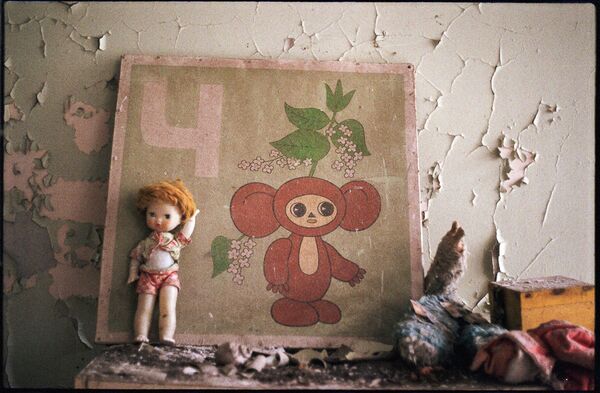
During the first three months following the disaster, 31 people died. Over the next 15 years 60 to 80 people died from radiation poisoning and 134 people suffered radiation intoxication. According to the World Health Organization, a total of 4,000 were killed by the radiation or are continuing to die. Greenpeace says 10 million people were affected by the radiation.
Above: A kindergarten in Pripyat.
Above: A kindergarten in Pripyat.
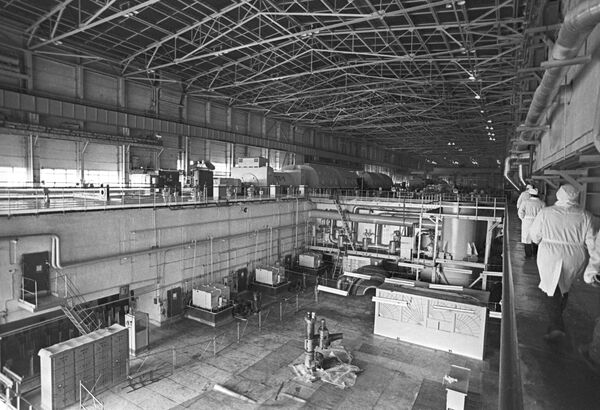
More than 100,000 were involved at the height of the containment campaign in the area of the Chernobyl nuclear power plant. During the first three years after the catastrophe, 250,000 workers visited the 30-km alienation zone. A total of 800,000 liquidators risked their lives battling to contain the contamination. In total 25,000 of them have died and 70,000 are disabled due to radiation intoxication.
Above: The turbine island for the first and second generating units of the Chernobyl nuclear power plant.
Above: The turbine island for the first and second generating units of the Chernobyl nuclear power plant.
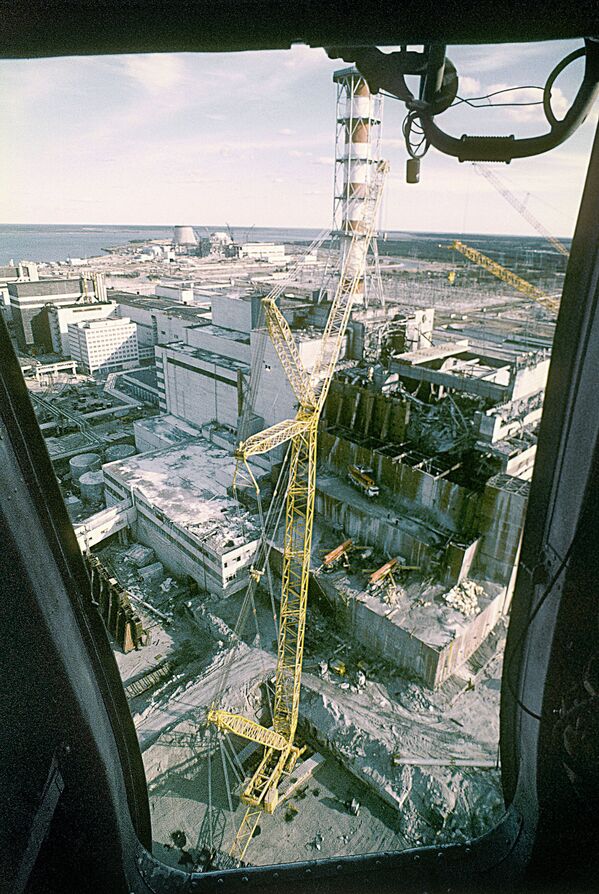
By the end of 1986, nearly 166,000 people were evacuated from 188 settlements, including Pripyat. In May 1986, a governmental commission ordered long-term conservation of the fourth reactor to prevent radionuclides from spreading into the environment.
Above: A bird's eye view of the Chernobyl nuclear power plant after the explosion.
Above: A bird's eye view of the Chernobyl nuclear power plant after the explosion.

The designing of the sarcophagus started on May 20, 1986, and was completed in November 1986. In autumn 1993 after a fire the second power unit of the power station was shut down. On December 1, 1996, the first power unit was decommissioned. In March 2000 the Ukrainian government ordered to shut down the Chernobyl NPP. The station was officially shut down on December 15, 2000, at 13:17 local time.
Above: Construction of the "Shelter" - a new, environmentally-friendly confinement over the 4th unit in the Chernobyl Exclusion Zone.
Above: Construction of the "Shelter" - a new, environmentally-friendly confinement over the 4th unit in the Chernobyl Exclusion Zone.
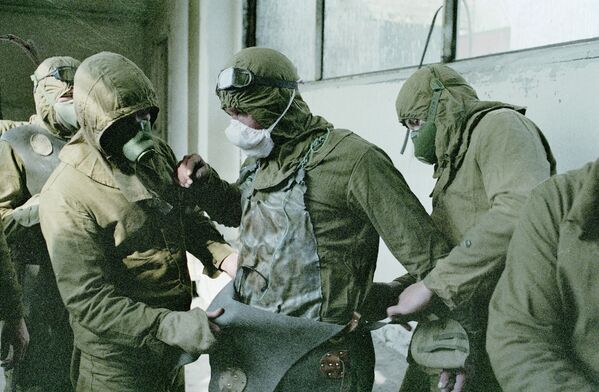
Today, a second confinement is being built to replace the ageing sarcophagus. The project is called the New Safe Confinement (or New Shelter). The object is planned to be a structure in the form of an arch, 105 meters high, 150 meters long and 260 meters wide. The NSC is designed to contain the radioactive remains of the fourth power unit for the next 100 years.
Above: People cleaning the roofing of the damaged reactor putting on protective suits.
Above: People cleaning the roofing of the damaged reactor putting on protective suits.

The project is funded by the Chernobyl Shelter Fund which includes 28 countries and is run by the European Bank for Reconstruction and Development. The NSC is expected to be completed in 2017. The New Safe Confinement will make the old sarcophagus and remnants of the damaged reactors safe and environmentally secure. The total cost of the plan is estimated to be around €2.2 billion with the shelter alone accounting for €1.5 billion.
Above: The Chernobyl Nuclear Power Plant after the disaster of April 26, 1986. Emergency helicopters gauging radiation and decontaminating the area.
Above: The Chernobyl Nuclear Power Plant after the disaster of April 26, 1986. Emergency helicopters gauging radiation and decontaminating the area.



